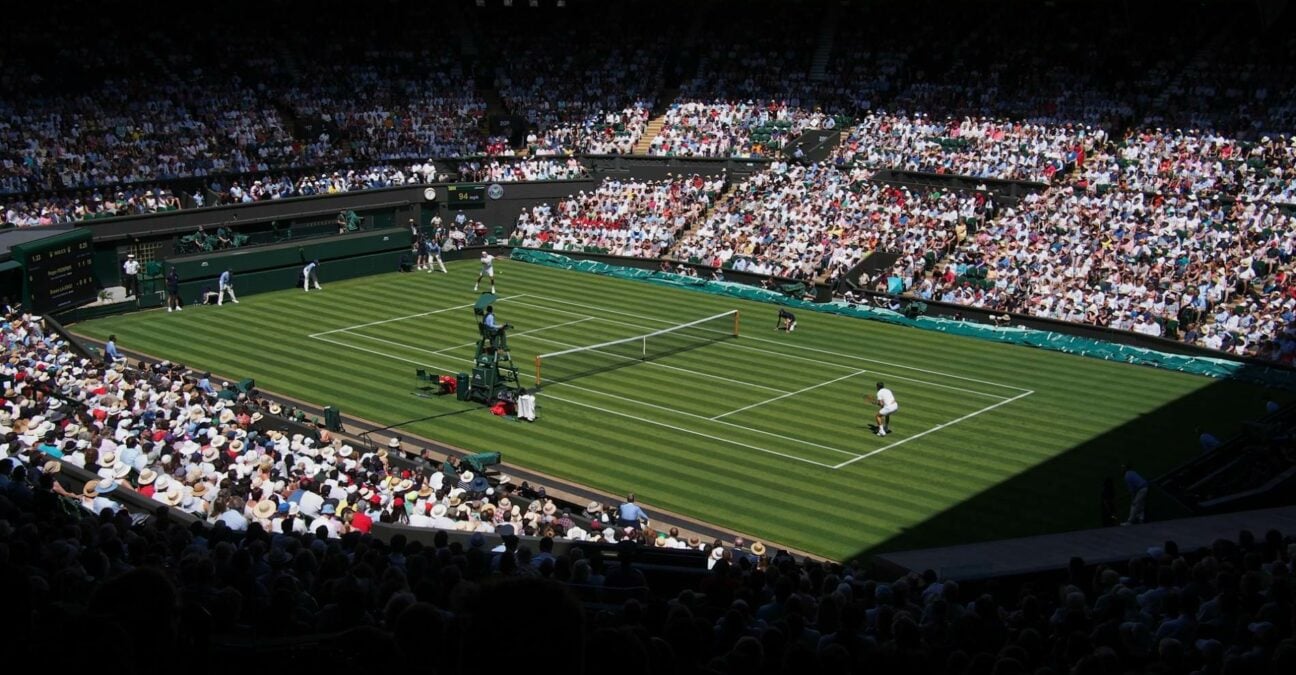The Best Tennis Locations Around the World
This article investigates exceptional tennis facilities and their origins and potential for multifunctional spaces
 Wimbledon, Centre Court
Wimbledon, Centre Court
Tennis has witnessed tremendous global growth in recent years, with participation surging by 25.6% to reach over 106 million players worldwide according to Statista.
Parallel to this rise, the construction and renovation of world-class tennis centers have elevated the sport providing the players and fans with contemporary facilities.
This article investigates exceptional tennis facilities and their origins and potential for multifunctional spaces, including the possibility of integrating casino technology.
Newport Casino
This tennis venue, located conveniently in Rhode Island, is a perfect example of how a tennis center can go beyond being a sports venue to become a full-fledged entertainment hub. Built in 1880, it wasn’t just about tennis— it also offered squash courts, lawn bowling, and much more.
Although the term ‘casino’ derives from its original usage as a social clubhouse and not a gaming destination, Newport serves as a model for how tennis centres can integrate multifunctional designs.
Furthermore, modern tennis centers should consider incorporating casino features where people can play slot games to attract diverse audiences. Such a blend of sports and entertainment would align with contemporary trends and enhance fan engagement.
Wimbledon All England Lawn Tennis Club
Wimbledon, in London, is known as the place of tennis champions. Popular for its well-manicured grass courts and puritanical standards, it stages the Wimbledon championship, the oldest tennis competition in the world.
Key facts about Wimbledon:
- Historic origin Wimbledon was started in 1868 and has been associated with tennis for more than a century and a half.
- Future expansion: Plans to bring in 39 more grass courts and an 8,000-seater main arena will boost capacity to 50,000 visitors per day.
- Modern innovations: The latest enhancements include a retractable roof and state-of-the-art amenities to sustain the venue’s international status.
These updates ensure that Wimbledon remains a beacon of tennis heritage while embracing the future.
USTA Billie Jean King National Tennis Center
One example of how technology modernizes tennis centers is the USTA Billie Jean King National Tennis Centre in New York. This amazing complex hosts the US Open and occupies 46.5 acres with 22 courts, the main piece being Arthur Ashe Stadium.
This facility, which is about more than hosting tennis, has a seating capacity of over 23,000 and houses the most enormous retractable roof in the world to guarantee play is not stopped. Recent improvements carried out in the center relate to improving the fans’ experience.
New seats, better sightlines, and high-quality acoustics of audio-video systems have turned the US Open into a live spectacle internationally. Real-time analysis and HD display have also brought fans into contact with the game, thus making tennis even more interesting to veteran fans and newcomers.
Rod Laver Arena
Rod Laver Arena is considered the backbone of Melbourne Park and a prominent part of the Australian Open. High-tech services, combined with an electric atmosphere, reassure Birmingham that it is a modern tennis venue amongst the best in the world.
Highlights of Rod Laver Arena:
- Capacity: It has several seats with the possibility of seating up to 14,820 fans, which helps create an intimate yet vibrant environment.
- Retractable roof: Enables match to continue through the hot Australian summer or any other season.
- Community focus: The venue hosts concerts and cultural events outside the tennis calendar.
Rod Laver Arena demonstrates that tennis can stay a multifaceted venue throughout the year and accommodate clients.
The Global Landscape of Tennis Infrastructure
According to the data provided by the International Tennis Federation ITF, the growth of tennis infrastructure is progressing, with more than 489,000 tennis courts worldwide and participation in tennis reaching 106 million across the globe. America has a leading share, possessing 16% of global tennis courts, followed by China, which has 10%.
Such an extensive network supports not only local players but also the development of high-profile centers that draw international audiences.
Key trends driving the evolution of tennis centers:
- Sustainability: Most contemporary venues use sustainable solar power and water treatment technologies.
- Fan-focused technology: Augmented and Virtual Reality enable digital enhancements that help to enrich spectator experiences.
- Entertainment integration: The possibility of adding casino technology to tennis venues exemplifies the potential for multifunctional spaces.
These trends highlight the sport’s adaptability and its efforts to attract a diverse and engaged fan base.
Conclusion
From the time-honored elegance of Wimbledon to Rod Laver Arena’s modern and future-friendly appearance, tennis centers are the new global standards. Facilities like Newport Casino exemplifies the efficient use of space.
It offers a glimpse into a future where tennis is not just a sport but a holistic entertainment experience. As tennis grows daily in different parts of the world, these centers play a significant role in ensuring that players and fans alike enjoy world-class facilities.
These centers are crucial in fostering talent, inspiring future generations, and expanding the sport’s reach. They serve as venues where players can push their limits, and fans can immerse themselves in the excitement, forging connections that transcend the boundaries of the court.











